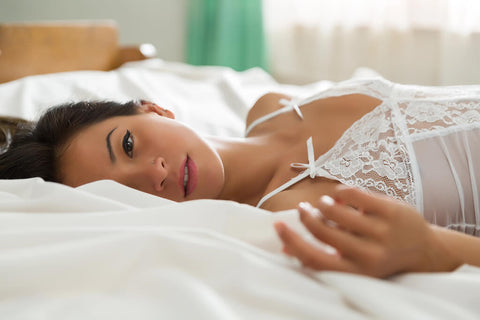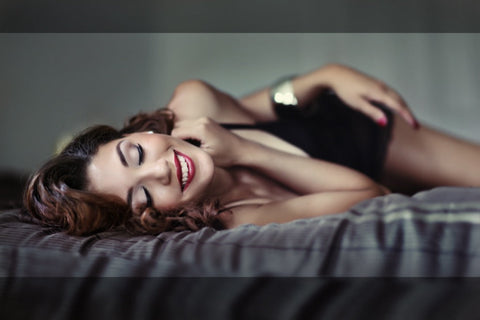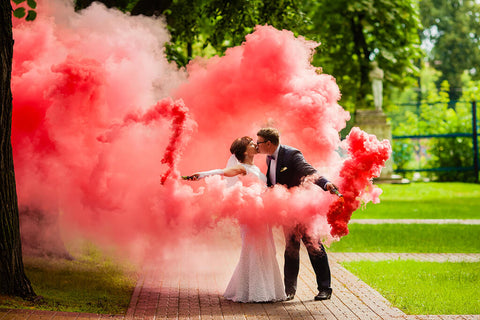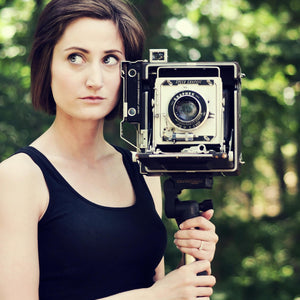- Lightroom Presets
- Mobile Presets
-
Photoshop
-
Learn
-
Support
-
Install
- Best Sellers
- Blog
By Anna Gay on | No Comments

In this post, we will look at why monitor color calibration is so important, and how you can calibrate your screen in order to ensure the images you photographed look their very best, both when you share them online and when you have them printed.
Color calibration is a process which makes adjustments to your screen in order to ensure color accuracy.
All screens are calibrated differently across devices. That is why you may notice that the same image looks slightly (or completely!) different on your desktop versus your laptop or phone.
Maybe you think that the color on your screen is accurate, but when you post your photos online, people mention that the colors look "off." This is where color calibration comes in - it is a process that will help you create images that look their very best across as many devices as possible.
Keep in mind, though, that not everyone else's screen is going to be perfectly calibrated, so even after you calibrate yours, if someone is looking at your image on a display that has not been calibrated, the image will likely look somewhat or totally different than it does on your screen. We will address this issue more in-depth later in this post.
Another important reason to calibrate your screen is to ensure color accuracy in your prints. If the color calibration on your monitor is inaccurate, the colors in your prints can end up looking completely different than they did on your screen! For example, a photo that looks totally black and white on your monitor may come out with a green hue when printed. Or, your image may look crisp and bright on your screen, but when you get your print back, its dark and fuzzy. Incorrect color calibration can affect the overall lightness of darkness of your prints, as well as the color.

Here are a few instances when you should calibrate your screen. Keep in mind that these are just a guideline, and when/how often you calibrate your monitor will vary from person to person.
How often you calibrate will also vary, and depend on factors such as:
The thing is, once you calibrate, it will be something that you will need to do regularly - it is not just a one-time thing. Some people prefer to calibrate every couple of weeks, while others may calibrate once a day - it really depends on your preferences and needs.
You may also want to look at the user manual on your calibration software (we will get to that next) to see if the manufacturer recommends how often to calibrate.

Now that we have established why and when to calibrate your screen, let's look at how to go about calibrating.
The easiest and most basic way to calibrate your screen is through your computer. This is great for basic computer use, but for photo editing and design work, you will probably need a more thorough calibration.
There are a number of third party devices (separate from your computer and monitor manufacturers) which allow you to easily calibrate your screen. These devices are placed directly on the screen, and communicate with your monitor in order to achieve the best calibration possible.
This is also the perfect way to calibrate multiple devices to display images the same way, so if you are having trouble with your laptop display looking completely different than your desktop, a calibration device will help solve this issue.
Datacolor and X-rite make some of the most accurate, easy-to-use and affordable calibration devices, making them extremely popular. Here are a few popular choices, and a brief rundown of what they do.
The Spyder series comes in Pro, Elite and Express, so there is a wide range of prices. As you could expect, with each jump in price comes added features, but all three are a great choice for calibration geared towards photo editing.
A feature that separates the Express from the Pro and Elite models are the Ambient Light settings. This means that the calibration will take into account the lighting in the room where you edit. Since the amount of ambient light affects how the screen looks to the naked eye, calibrating your screen to take into account the amount of ambient light in your editing space can be extremely important.
For more information on Datacolor calibration devices and to see a video on exactly how the Spyder works, visit their website here.

ColorMunki is also a favorite among photographers, and also has an ambient light feature. Included with the ColorMunki display is a mobile app to calibrate your iPhone and Android screens. The ColorMunki Display also has "Easy" and "Advanced" modes - allowing you to choose from calibration presets, or to have more control to fine tune.

If you do not print your photos or need advanced calibration features, you may find that the ColorMunki Smile is the perfect fit for you.
This is a totally valid question and concern that a lot of photographers who are new to calibration have, but the fact of the matter is that not everyone is going to have a calibrated monitor - it's just that simple. There is a good chance that your client's images will look different on their screen than on yours, so you have to just let it go! The important thing is that your monitor is calibrated. You are the photographer, so it is up to you, not your client, to choose how to calibrate your display and how to edit your images.
Do you have any questions or other tips about Monitor Calibration? Leave us a comment below - we would LOVE to hear from you! And PLEASE SHARE our tutorial using the social sharing buttons (we really appreciate it)!




Anna Gay is a portrait photographer based in Athens, GA and the author of the dPS ebook The Art of Self-Portraiture. She also designs actions and textures for Photoshop. When she is not shooting or writing, she enjoys spending time with her husband, and their two cats, Elphie and Fat Cat.

Comments